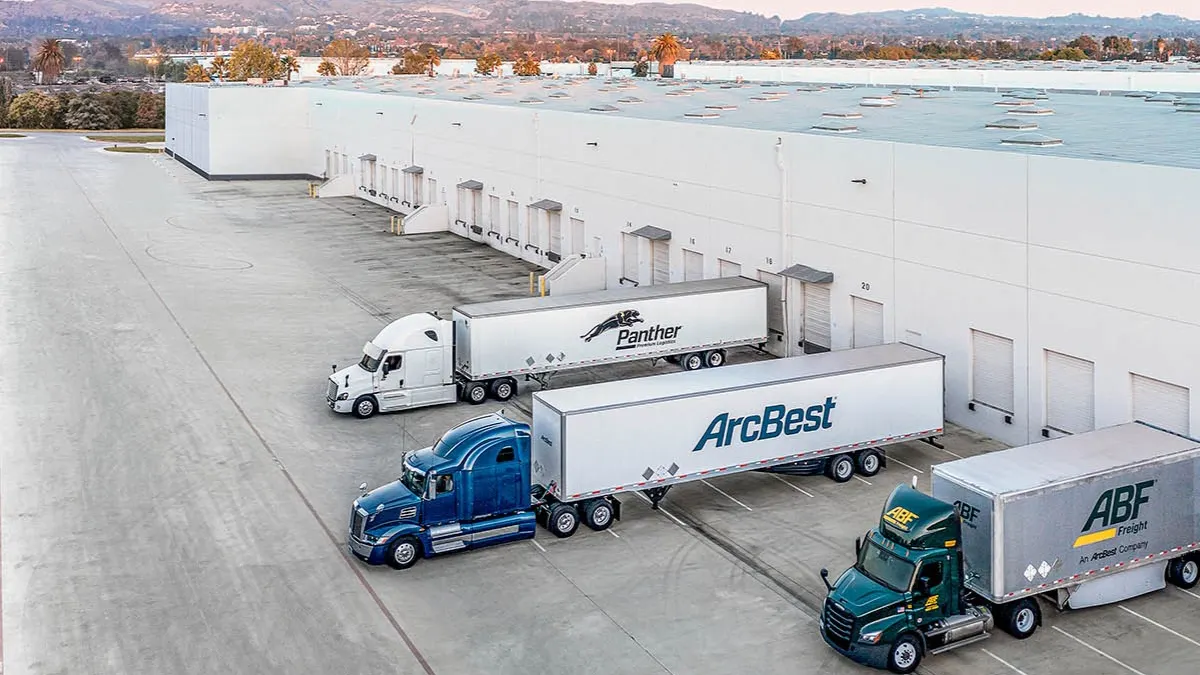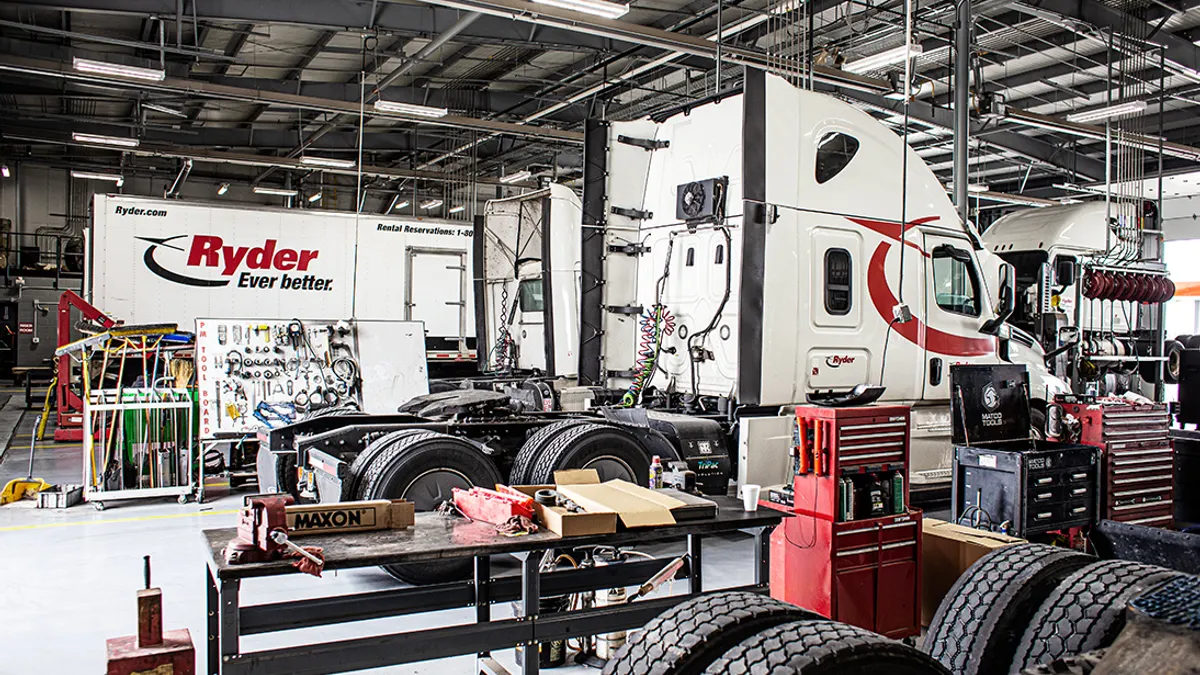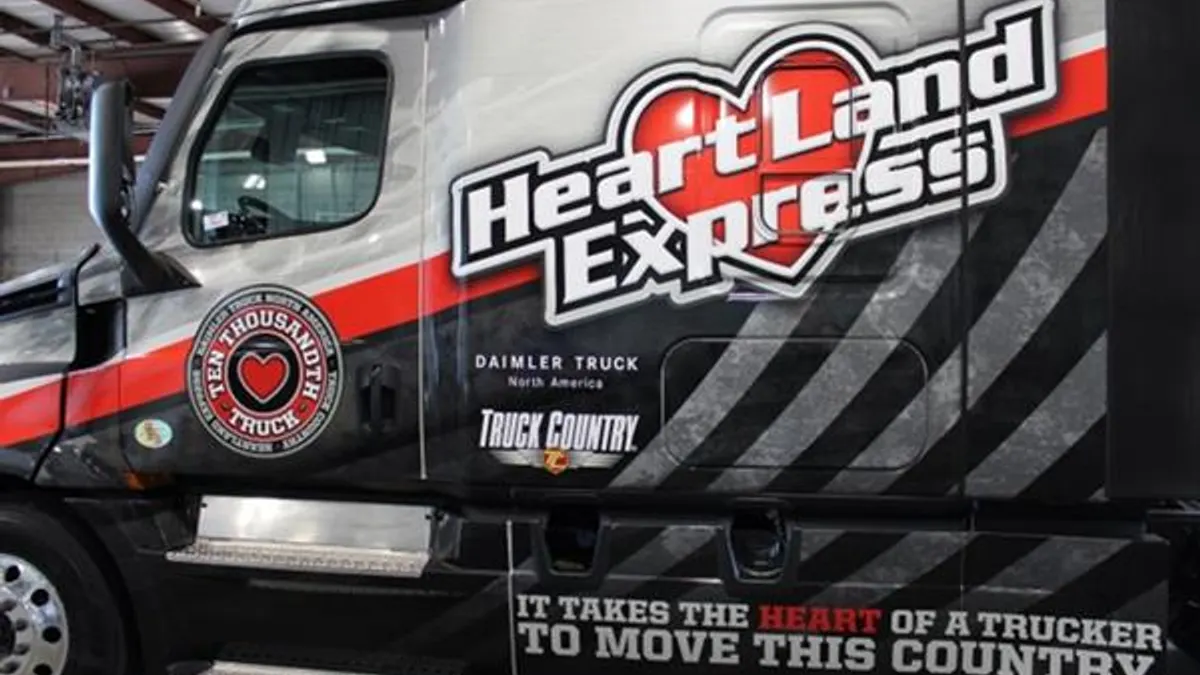This is an opinion piece by Ellen Voie, president and CEO of the Women In Trucking Association. Views do not necessarily reflect those of Transport Dive.
Look around your office. What is the ratio of women to men? Is it pretty equal? Does your C-Suite have the same balance as your front office staff? Are you ahead of the curve when it comes to having a gender-diverse balance?
If your female executives are more than one out of four, then you’re higher than average. If your safety professionals number more than 40%, you’re great. For your non-executive team, if women represent more than 44% of your staff, you’re on your way to a great balance.
The supply chain industry still lags behind all industries in which women hold 52% of management and professional level jobs.
The U.S. ranks 51 (out of 149 countries) in the Global Gender Gap Score from the World Economic Forum. The Organization for Economic Co-operation and Development found if we close the global gap in workforce participation between men and women, GDP worldwide would grow by nearly 12% by 2030.
If your female executives are more than one out of four, then you’re higher than average.

There is a cost to a company without gender diversity. Pepperdine University Professor Roy Adler found a correlation between high levels of female executives and business success. Catalyst Research reports companies with the highest representation of women leaders financially outperform, on average, companies with the lowest.
All this points to a more robust bottom line when you add women.
So, why does the supply chain industry still lag in gender parity? Men have always dominated transportation careers, since the early days of railroads, horse drawn carriages and even airplanes. However, the physical components of the jobs have changed and strength isn’t a prerequisite.
You’ve probably heard the term, "the good old boy’s network." Every large trucking company started with one man and one truck. While many daughters are now taking over from their dads, there are still a lot of sons in the succession planning.
Why? We all have an unconscious bias when it comes to communication, and this extends into the hiring and promoting areas.
Every large trucking company started with one man and one truck. While many daughters are now taking over from their dads, there are still a lot of sons in the succession planning.

The first step is admitting we all have biases. Own it, understand it and reflect on your personal preferences. Next, evaluate the diversity of your current team and ensure your hiring staff is also diverse.
Companies that use more objective measures take some of the subjectivity out of the hiring process. Make sure to ask each applicant the same questions in the same order and scrap the subjective questions, such as asking for the potential employee’s response to hypothetical situations. The manager gets to determine if the answer is acceptable, which brings the control back to the values of the interviewer. Leadership selection is subjective and often leans toward hiring someone who "looks like you," according to Susan Vinnicombe, Cranfield University International Center for Women Business Leaders.
Watch your discussions regarding potential candidates for a leadership role. A 2011 McKinsey Report claims interviewers evaluate men based on potential but women by their accomplishments. If you find yourself asking, "But what has she done in her career so far?" then you’re falling into this hiring bias.
You should also be aware that women often hold themselves back without realizing it. Hewlett Packard found women won’t even apply for a position or a promotion until they have 100% of the criteria. This is in comparison to men, who apply for a job or career advancement when they meet 60% of the requirements. Why? Women are often perfectionists and feel they need to achieve all of the job duties.
Women are less likely to negotiate higher salaries, benefits or promotions as outlined in the book, "Women Don’t Ask." While men often view the negotiation process as a challenge, for women it’s a more uncomfortable process that involves a level of competitiveness.
Gender diversity makes good common sense, but it also makes more cents.

In order to overcome self bias, we also need to be aware of these self-limiting thoughts. Best practices include positive affirmation — remind yourself that you are capable and can do the job. Learn to handle criticism and accept praise. Don’t diminish an award or a compliment by deflecting the focus on yourself.
We also need to take risks in our careers. Go for the promotion and don’t expect perfection. Don’t think you need to check every box before you get the job. If you are already 100% capable of the new role, shouldn’t you look beyond it to the next level?
Just because transportation careers are traditionally dominated by men, doesn’t mean we need to accept is as we move forward. Gender diversity makes good common sense, but it also makes more cents.
Look around your office and see if your company is better than the industry average. It’s worth your time and effort and will be reflected in the financial results.
















